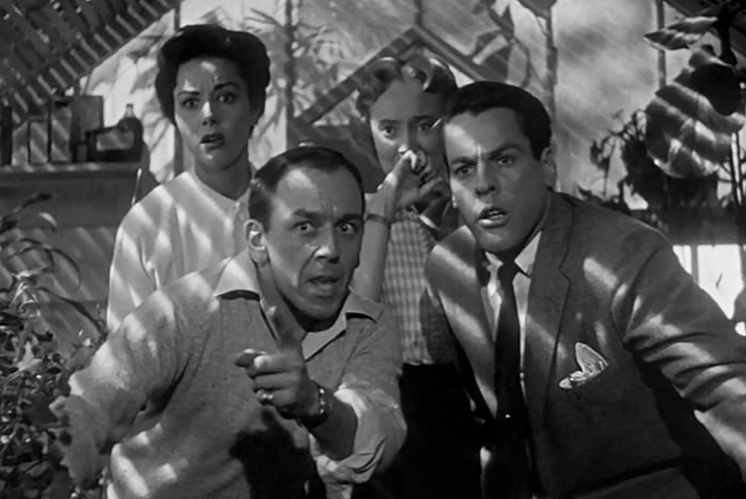Invasion of the Body Snatchers: A review of the Who Cares? event

Opinion
Some of us may feel like Miles Bennell, screaming at strangers that someone’s after us. But it doesn’t have to be this way. It’s time to redefine what and who the ad industry is.
At the end of Don Siegel’s paranoid Cold War classic Invasion of the Body Snatchers (1956), the hero Dr Miles Bennell escapes the clutches of the citizens of small town Santa Mira. His pursuers are his one-time friends who have had their bodies inhabited by aliens who arrive in strange pods blown from outer space.
Bennell rushes on to the Los Angeles highway and screams at the passing traffic: “You fools, you’re in danger… they’re after you, they’re after all of us — our wives, our children, everyone!”
He is right, but the passing drivers view him as a madman and the aliens of Santa Mira leave him to his fate, confident that no-one will believe his fantastical ravings.
Fresh from the Advertising: Who Cares? Summit last week, I found myself pondering on this “reds under the bed” sci-fi horror and how the arrival of those who look like us but are bent on our destruction can happen so easily, unnoticed by the victims.
Who Cares? was founded by Nick Manning and Brian Jacobs with the aim of finding answers to the industry’s many well-known problems.
A different picture
In the last 30 years, the ad industry has eagerly welcomed a host of new arrivals, whose genius in data promised a world in which we know so much about customers that we know exactly what ads to serve them, personalised to their interests and, critically, what this marketing investment will return. Hmm.
At Thursday’s event, a very different picture emerged of the current state of the industry.
Over 50% of ads are unviewable.
Ad fraud is second only to the drugs industry, with $120bn a year siphoned off to fund God knows what horrors.
Underpaid and often inexperienced creatives make over 300 pieces of copy per year.
Seduced by tech
Sir John Hegarty drew the biggest laugh of the event. He shared the damning statistic that of the $750bn spent on advertising in 2023, only 6% was truly effective. Why the laughs? Because, at Cannes, he was challenged that the effectiveness figure was higher… more like 8%!
Michael Farmer eviscerated the performance of agency holding companies and leading global advertisers in the last 14 years with data charting their anaemic growth.
It would have been instructive to plot another line on the graph showing the inexorable growth in adspend for pure-play digital and online display — the worst-performing ad format according to all major econometric studies, but the sector that enjoys impressive if irrational continued revenue growth.
We have all to some degree been seduced by the promises made by the tech giants. We have been eager to ape, quote, join and take a share in their munificence and wisdom.
There can be an inescapable sense that the good intentions of smart people may be barking at the moon. That the challenges faced by the ad industry are insurmountable and the competitors too powerful to be challenged. That current trends are irreversible.
Redefinition and realignment
But there is always hope.
In Invasion of the Body Snatchers, one man’s determination to alert the world to the dangers afoot and the crashing of a truck carrying the alien pods lead to the LAPD finally believing our hero and calling the FBI to thwart the aliens.
The ad industry is currently being choked by digital classified knotweed. Billions wasted on invisible, interruptive ads that are turning consumers against advertising and ultimately letting down the funding clients.
Ad fraud, addiction to screens and harmful and divisive content thrive when there is limited and ineffectual regulation. The whole industry is tainted and feels obliged to address these issues and the alienation of consumers. Time and money are wasted on this stuff.
Imagine a world where there is a redefinition and realignment of what the ad industry is. Who is represented by which bodies? Who do we share conferences and events with and what do we talk about at these events?
Where “publisher” refers to an organisation that takes responsibility for what it publishes.
Change for the better
Would a redefined ad industry challenge the idea that we must be able to compare apples and oranges? It’s a metaphor I find misleading. Most of us would swap an apple for an orange.
A better analogy is comparing apples and bird seed. One is healthy and good for you. The other is plentiful but unsuitable as human foodstuff. As Sir John showed, 94% of what is being put out is ineffective, so does it really matter how much of it there is?
Wouldn’t a redefined ad industry spend more time talking about advertising?
It is time to redefine who is in the ad industry and who isn’t — and organise accordingly.
You may say I’m a dreamer, but I’m evidently not the only one. Advertising: Who Cares? showed there is an impressive cohort who want change for the better and are committed to work for it. Thursday’s event could be the first step in a much-needed redefinition of the ad industry.
 Simon Redican is the former CEO of Pamco and an independent consultant and commentator on the ad industry
Simon Redican is the former CEO of Pamco and an independent consultant and commentator on the ad industry




